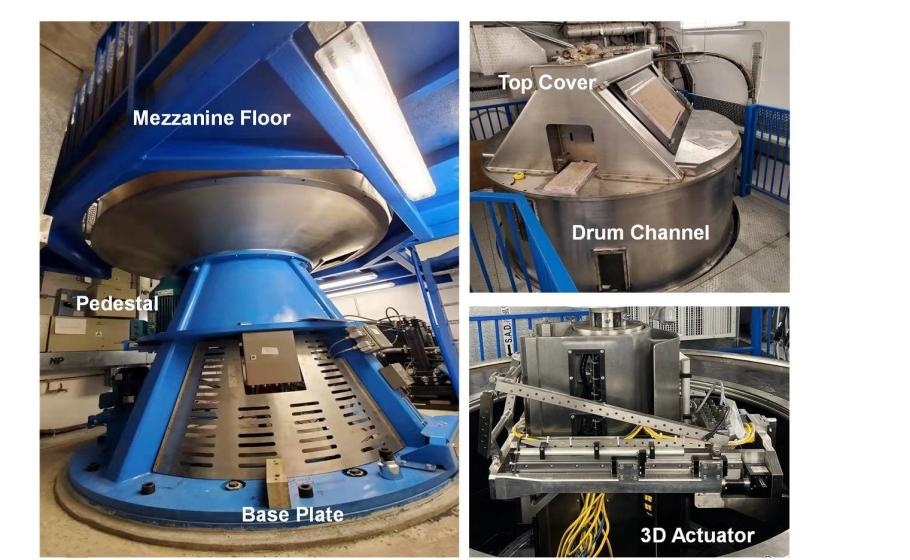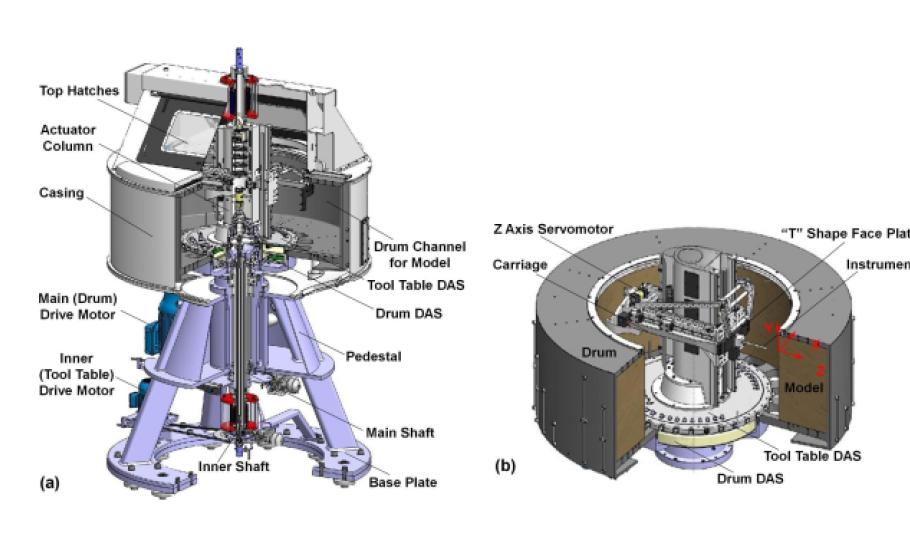Geotechnical Centrifuge Modelling
The Geotechnical Centrifuge Facility (GCF) at The Hong Kong University of Science and Technology (HKUST) is a powerful and advanced laboratory for physical modeling of various engineering related problems, such as rain-induced landslides, consolidation settlement of reclaimed lands, seismic ground response, earthquake-induced liquefaction and deformations, offshore structure response to wave loading, seabed pipeline instability, pollutant transport in porous media, tunneling, deep excavations, piles and many other soil-structure interaction problems subjected to both static and dynamic loading conditions. The maximum modeling capacity of the centrifuge is 400g-ton. Geotechnical structures can be built in model boxes with maximum dimensions of 1.5m x 1.5m on plan and 1.0m high. Geotechnical centrifuge modeling technique has been developed very rapidly in the last 15 years and it has become very popular around the world.
The basic principle of centrifuge modeling is to create the stress conditions, which would exist in a full-scale construction (prototype), using a model of greatly reduced scale. This is done by subjecting the model components to an enhanced body force, which is provided by a centripetal acceleration of magnitude appropriate for the scale of the model. Thus, centrifuge is suitable for modeling gravity and time dependent problems.
The GCF funded partly by a UGC Central Allocation Vote and partly through a matching fund from HKUST is unique in Hong Kong. This facility is dedicated to serve not only the University but also the geotechnical community at large in Hong Kong and in the World.


